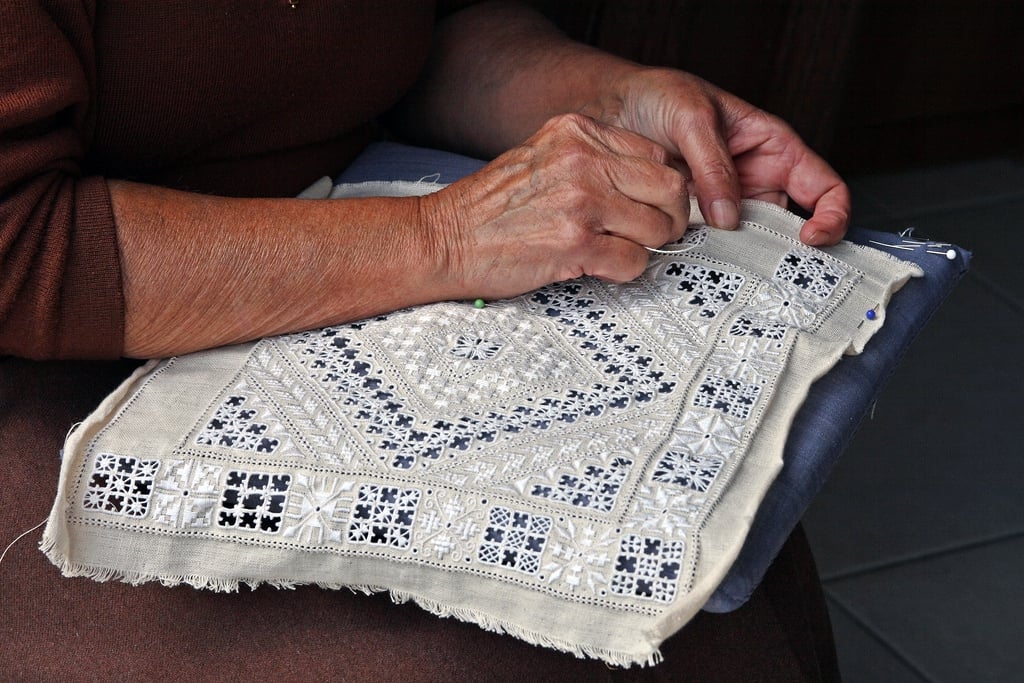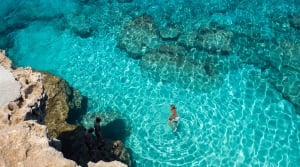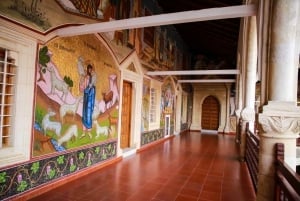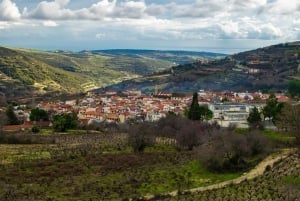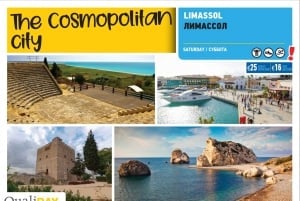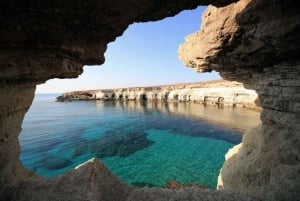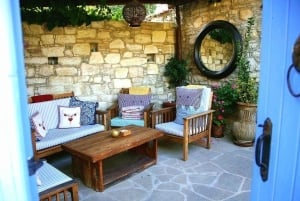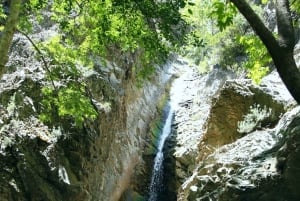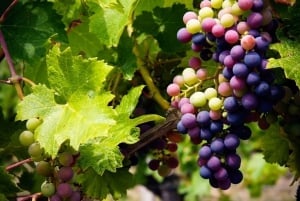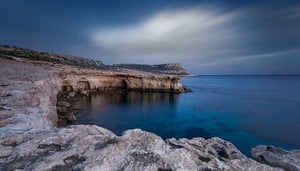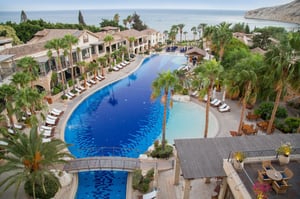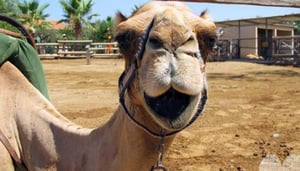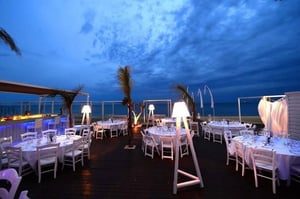Getting off the Beaten Track in Cyprus
A beautiful and very different world, where time doesn’t matter and you feel at one with nature
Book Top Experiences and Tours in Cyprus:
If youʻre booking your trip to Cyprus last minute, we have you covered. Below are some of the top tours and experiences!- Paphos: Tour to Troodos, Kykkos Monastery, Omodos and Winery
- Cyprus: Troodos Mountain Food & Wine Tasting Tour with Lunch
- From Paphos: Guided Tour of Limassol with Rock of Aphrodite
- East Coast National Park: Half-Day Caves Jeep Safari
- Ayia Napa: Blue Lagoon & Turtle Cruise with Optional Lunch
Cyprus is famous for its warm climate, sandy beaches and balmy waters, which is something not lost on the processions of tourists each year who relish the opportunity to stretch out under a sun umbrella with a good book. However, there is much more to Cyprus than sun, sea and sand, and in this article we want to show you that it is possible to escape the crowds and uncover a whole different side to the country. So without further ado, here are our top ten things to do in Cyrpus that the guide books don't have time for.
Welcome to the 'real' Cyprus!
The Village of Anoyira
Anoyira is situated between Limassol and Paphos and is a traditional Cypriot village. It nestles amongst vineyards and the first stop is on the lower edge of the village to see the stunning view of the coast below and the ruins of the monastery of Timiou Stavrou with its Tripimeni Petri (one of a number of ancient pierced monoliths thought to have been used in old olive presses but today surrounded by folklore!)
The village was the regional centre for the carob trade and donkeys carrying sacks of carobs would head down to the old wooden jetty at Evdhimou where the carobs were ground and exported for animal feed and the precious seeds inside were sold separately. In the heart of the village, there is a small museum that explains the importance of carobs to the island’s economy. The village has cobbled streets and many restored houses. There is a winery too and on the north eastern outskirts of the village the Oleastro Olive Park where visitors can watch olive oil being made, enjoy snacks made with olive oil and learn the importance of olive oil in Cyprus for cooking, beauty and good health!
The Akamas peninsula, northwest of Paphos, is a rugged, natural wilderness that is perfect for those who enjoy walking and who are interested in botany, ornithology and nature generally. On the fringes of the Akamas, just north of Ayios Yeoryios is a hidden world that is well worth exploring – the Avakas…
The Avakas is one of several gorges in the area and the most spectacular. Its mouth lies just behind the beach at Toxeftra and is easily reached on a dirt track that leads through citrus plantations with tress laden with grapefruit. Once inside the gorge it is a beautiful and very different world where time doesn’t matter and you feel at one with nature. The steep cliffs of the gorge narrow quickly and dramatically and the silence is broken only by the trickle of the stream and the jingle of goat bells far above.
The sun rarely penetrates into the gorge and on all the rocky ledges tiny cyclamen and maidenhair ferns flourish in the cool shade. The gorge stretches inland about 4.5 kilometres inland with the pathway climbing upwards to its source amongst the vineyards near Pano Arodhes and walkers are treated to the sight of wild flowers and many different birds.
- The gorge can be explored all year round except in the winter months when torrential rainfall can cause sudden flash floods.
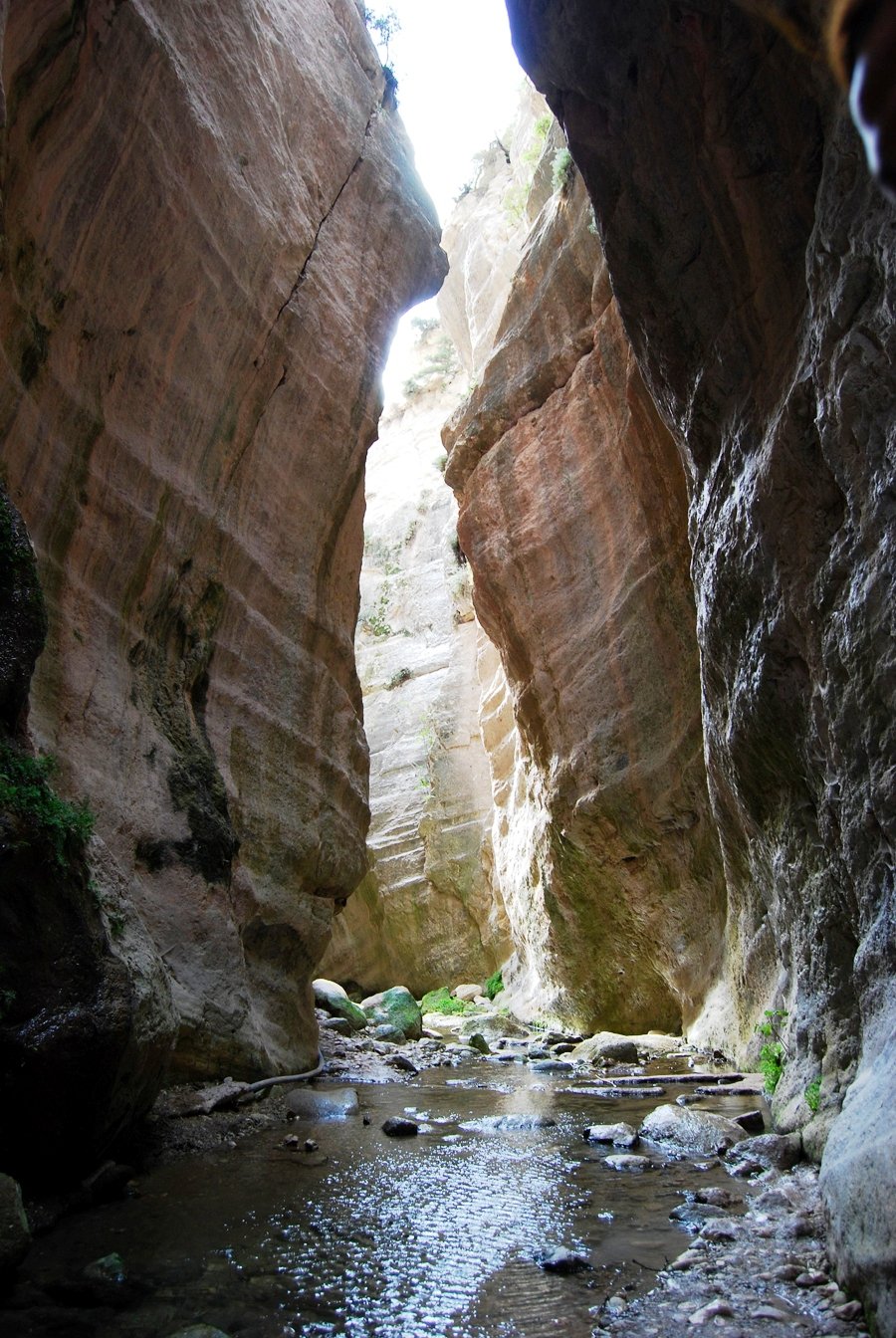
The Coastal Walks
Cape Grecois, the most south-easterly point of Cyprus, situated midway between the resorts of Ayia Napa to the west and Protaras to the east. Most of the area is National Park comprises of some of the island’s most dramatic coastline with rocky arches and sea caves with forests and scrubland of gorse, wild juniper and carob trees inland.
The Greko National Park covers 365 hectares and was created in 1993. The park has been carefully developed and has road and cycle tracks that are easy to navigate and there are sizeable clear route maps displayed at regular intervals. There are several nature trails including ‘Aphrodite’s Cultural Route’.
The coastal walk between Ayia Napa and Protaras is particularly popular and walkers and cyclists can go at their own pace as there are plenty of park benches along the route. At the furthest tip of Cape Greco there is a lighthouse, which is inaccessible as it has the Somera international radio relay station which was built 40 years ago and transmits across the Middle East.
At the other end of the island, the six kilometre coastal walk from the Baths of Aphrodite to Cap Arnaoutis is probably the most spectacular. The walk can be enjoyed at your own pace and on the whole is smooth underfoot - a good alternative is to hire a mountain bike. The path leads high above the clear blue sea and numerous tiny bays and it is fun to watch the various fishing boats go by. Don’t get excited about Fontana Amorosa – the Fountain of Love – because in reality it is just a muddy puddle. Continue the walk until it flattens out by the shore and then take the plunge and really enjoy a good swim.
If this all sounds too energetic, there is a good boat trip that leaves daily at 10.00am from Yiangos Taverna in Latchi. Lunch is enjoyed onboard, moored in one of the bays and for youngsters there is the thrill of swimming under the boat which is glass-bottomed and waving at fellow passengers before resurfacing.
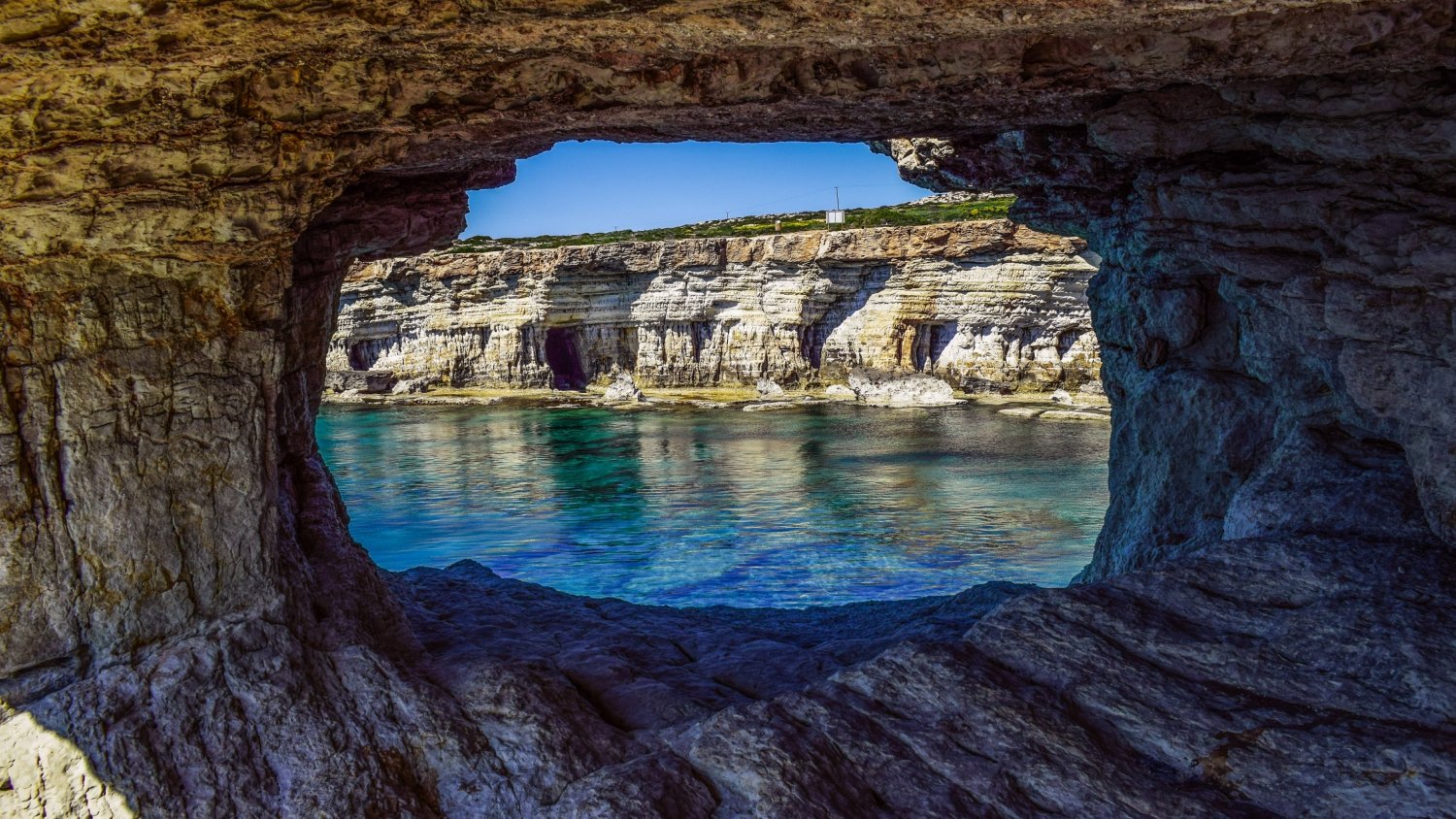
Pano and Kato Pyrgos
Pano (upper) and Kato (lower) Pyrgos are twin communities situated on the coast of north Cyprus, east of Pomos and close to the Green Line that has divided the island since the Turkish Invasion of July 1974. The drive from Polis Chrysochous to Pomos is beautiful as the beaches are deserted. A reminder of the invasion is the enclave east of Pomos which must be skirted – adding time and mileage to the journey – but it is well worth it!
The fishing village of Kato Pyrgos has a few family-run hotels, some great beaches (in particular Omega), a pretty harbour and some good restaurants. Pano Pyrgos is just a small hamlet, four kilometers inland up a narrow twisting road where time has stood still.
Pano Pyrgos is where most of the charcoal in Cyprus is made from trees grown in the Tillyria area. Visitors to the hamlet can see large domed mounds of wood gently smoldering, and next to each an elderly lady sits under a battered sun umbrella filling bags with lumps of charcoal and stitching the bags closed, just as her mother would have done before her.
The Village of Agros
In the months of May and early June, the mountain village of Agros is transformed by the beauty of thousands of deep pink Damascus roses. Rose water has been used in Cyprus for generations, both as a beauty product for softening and perfuming the skin and as flavouring for local pastries like Kadeyfi and Baklava.
Early each morning, the women begin work, carefully picking thousands of the flower heads before the sun evaporates their precious essential oil. The flowers are quickly taken to the village’s rosewater factory, where Chris Tsolakis and his family are waiting to start the extraction process. Visitors are welcome to visit the factory to watch the rosewater process and to have their photos taken lying in a bed of rose petals! There is a well-stocked gift shop.
As well as the rose factory, Agros also has an ecclesiastical museum, Niki’s glyka factory and the Kefkallia family’s Hiromeni and Lounza factory
If you really are an early bird, you can always volunteer to help with the rose picking!
The Shacolas Observatory in Nicosia
Situated on the 11th floor of a tower above the Ermes Department store on the corner of Ledra Street in the old city of Nicosia is the Shacolas Observatory and Museum which gives visitors a good insight into events of July 1974 and the Turkish invasion. The air-conditioned observatory gives a 360° ‘bird’s eye’ view over the city and the ‘Green Line’ and into the occupied part of the city where such landmarks as Saint Sophia can be clearly seen. The information boards give plenty of information and visitors can borrow headphones and listen to an audio presentation in a variety of languages.
For anyone keen to learn the island’s history and to understand the undercurrent of sadness felt by each Greek Cypriot, a visit to the Observatory and to the checkpoint (just a few minutes’ walk further down Ledra Street) will reveal the reason why Nicosia remains the only divided capital in the world…
The Akrotiri Environmental, Educational and Information Centre
The centre stands overlooking the Akrotori Salt Lake and reveals the ecological importance of the Akrotiri peninsula and interesting facts about the island’s most important feathered migrant visitor – the flamingo.
The peninsula is a unique area with 27 types of natural habitat - indeed, 70% of the island’s migratory and resident bird species can be found there. The area is an important nesting area for both species of marine turtle that come ashore in Cyprus during the summer months – the Green (Chelonia mydas) and Loggerhead (Caretta caretta) – as well as a myriad of different insects and invertebrates. Archaeologically, the peninsula has the earliest remains of human civilization on the island which are 12,000 years old. Ethnographically, the village used to be an important basket-making centre and still has a handful of craftspeople.
There are reference books, information leaflets and touch screen computers giving access to information on flora, fauna, the geology of the area and habitats and all information is in both Greek and English. There is a projection room where visitors can see brief presentations on different topics including the geology of the peninsula and how the salt lake was formed. Upstairs on the roof is the observation platform. Binoculars and telescopes are provided to watch the birds on the Salt Lake – which during the autumn and spring include many different species of migratory birds.
There is also the 2.5 km ‘cultural trail’ around Akrotiri village which includes a visit to the church, the coffee shop and some of the basket makers. The walking tour is free of charge and is suitable for pushchairs and wheelchairs. The tour begins and ends at the Environmental Centre.
- The Akrotiri Environmental Education and Information Centre is open daily 08.30 – 15.00 with free entrance. Telephone +357 25 826 562 or e-mail akrotiricentre@cytanet.com.cy
Kykkos - The most magnificent monastery of all…
Kykkos Monastery, nestling amongst wooded hillsides in the mountains is the richest monastery in Cyprus and known throughout the Orthodox world. Founded in 1100, the monastery takes its name from the hillside on which it stands, which in turn is name after a type of acorn that grows in abundance there.
The monastery contains a priceless icon of the Virgin Mary which is said to have been painted by the apostle Luke. The icon is encased in silver gilt and displayed in a beautiful shrine at the front of the iconostasis. During its history, the monastery has been burnt down four times, but the beautiful icon of the Virgin Mary has always miraculously survived. The icon is believed by many to have special powers that encourage rainfall. The monastery has many other valuable Byzantine icons and other ecclesiastical pieces which are on display in its museum. The monastery also has the largest ecclesiastical library on the island. The monastery bells are very special – there are six in all – and these sound out across the valleys on Sundays and all religious festivals
Today pilgrims from all over the world come to Kykko and it is possible to rent a room overnight and to attend morning mass – which really is a very special experience. The monastery’s feast day is on 8 September.
- If you are planning to visit Kykko monastery please ensure that you are modestly dressed with no bare shoulders or knees. If you are inappropriately dressed you will be provided with a robe.
Palaeontological Museum in Larnaca
Situated in the restored Customs House that overlooks the Phinikoudes Promenade in Larnaca, the Palaeontological tells the story of Earth’s evolution and the many fascinating discoveries made in Cyprus including the skeletons of pygmy hippos on the Akrotiri peninsula.
Visitors learn how rocks were formed and fossils created, and take a step back in time to see audio visual presentations on the dinosaurs as well as life-size models which include a ramphortrynchus flying overhead.
- The museum is open Tuesdays – Friday 10.00 – 13.00 and 16.00-18.00 and on Saturdays and Sundays 10.00 -13.00. Telephone +357 24 628 587
The Cyprus Handicraft Services Workshops in Nicosia
One of the more unusual items that visitors can see being made at the Cyprus Handicraft Service workshops in Nicosia is the beautiful carved dowry chest - sendukia. Only a handful of craftsmen still make these large wooden chests that used to be filled with a bride’s possessions, but today are much sought after as they are very attractive pieces of furniture.
The workshops are situated on the outskirts of Nicosia and are all under one roof. Visitors can pause awhile to watch the huge traditional looms (Woofah) being used to weave colourful rugs using long pieces of old material. Close by, a few ladies are busy sewing the beautiful Lefkaritika – the intricate embroidery made in Pano Lefkara and Phitiotika from the Paphos village of Phiti. Other handicrafts that can be seen are filigree silverwork, chair making and copper ware.
As well as ensuring that the traditional handicrafts do not disappear, they are being preserved as the CHS employs young school leavers who are being taught the handicrafts and will be given full-time employment once they have completed their training. There is a well-stocked gift shop and commissions are undertaken.
- The Cyprus Handicraft Services Workshops in Athalassa are open Monday – Friday 07.30-14.30 and Thursday afternoons 15.00 - 18.00.
